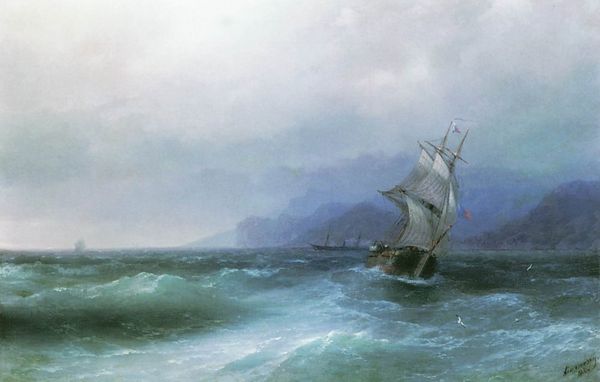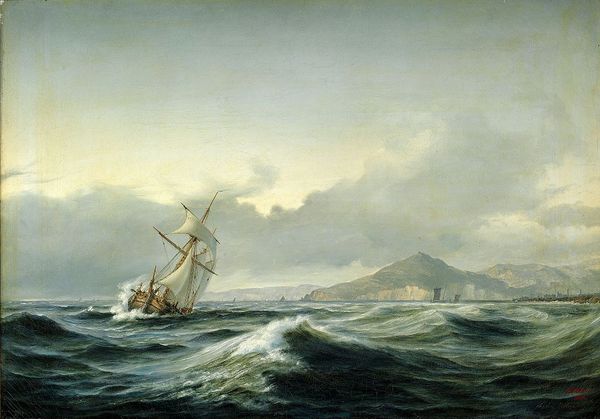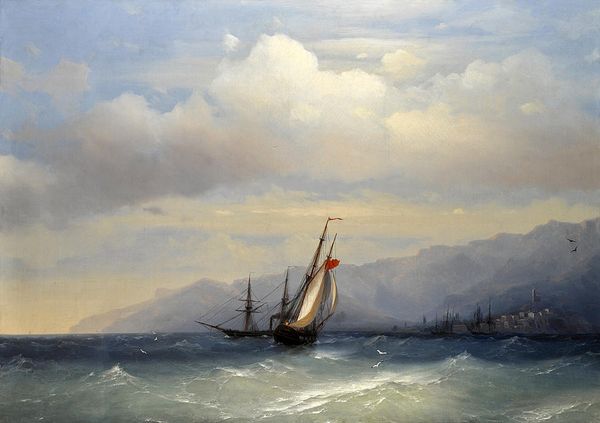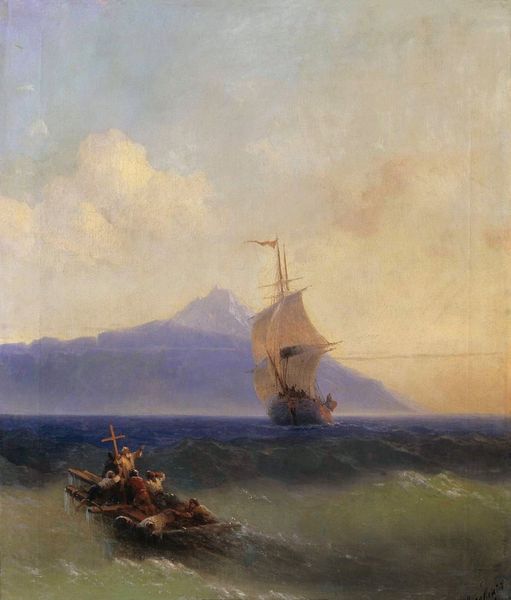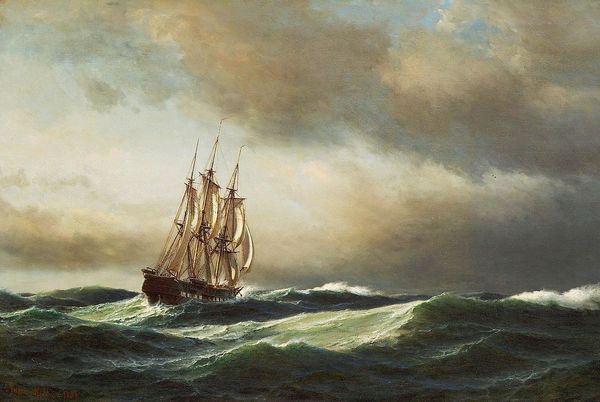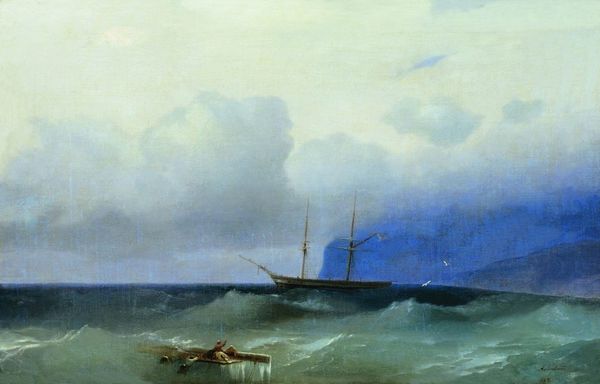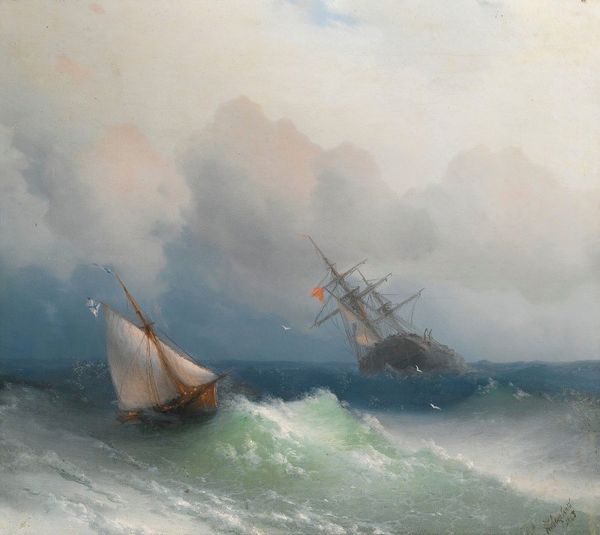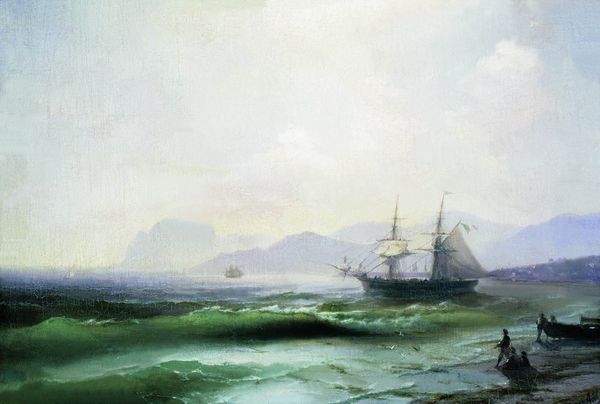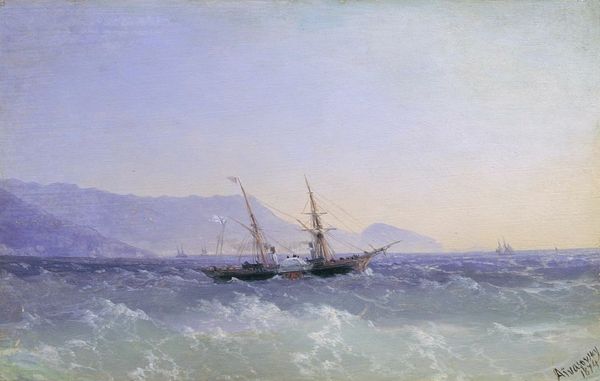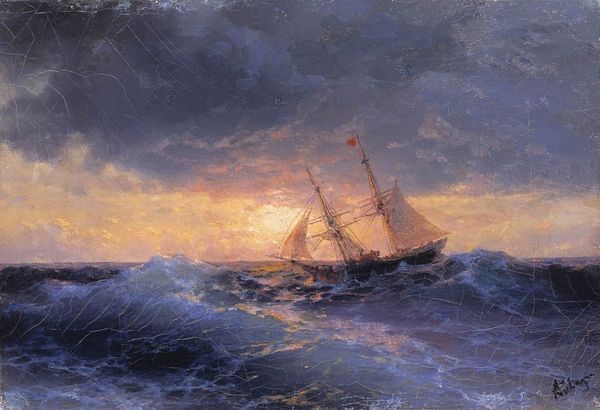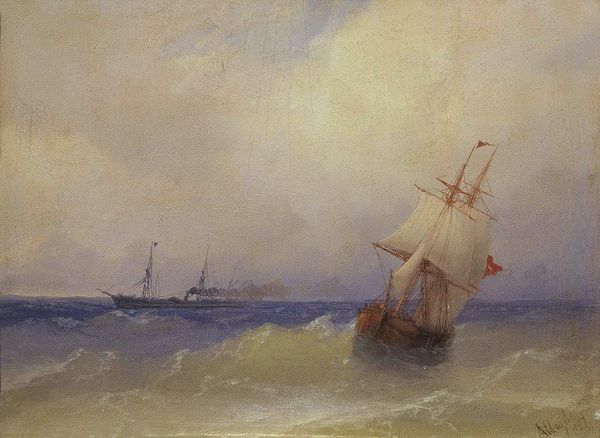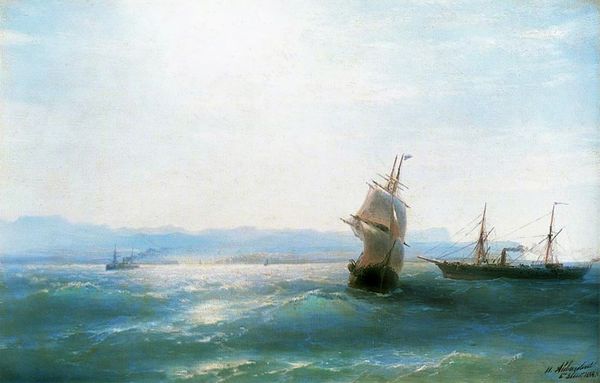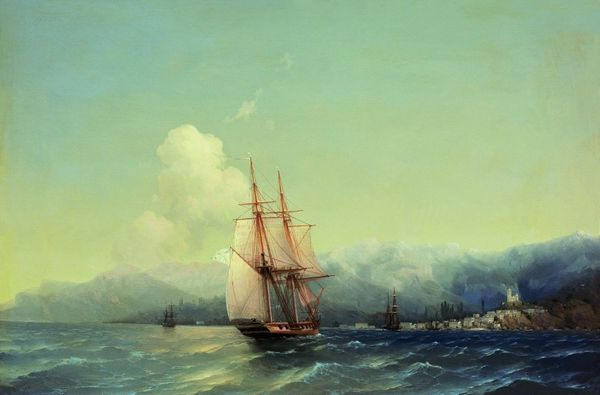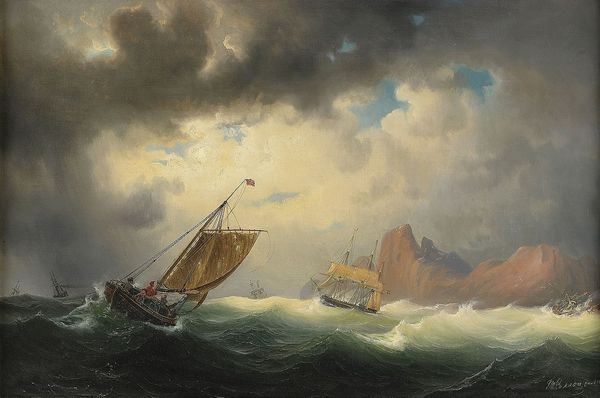
Copyright: Public domain
Curator: "On the Coast," a seascape crafted in 1875 by Ivan Konstantinovich Aivazovsky, immediately strikes one with its compositional balance. There is something captivating about the geometry here... Editor: It feels foreboding, though, doesn't it? Like the lull before some enormous ecological disaster. Look at the rough sea, how violently the water meets that ship! There is such visible precarity here, I cannot ignore that element in Aivazovsky's composition. Curator: Indeed. Note the tension between the details of the rigging on the main ship versus the somewhat abstracted, almost spectral rendition of the steamer ship near the horizon line. Observe the almost square sails; the geometrical tension provides some internal dissonance, as the perspective is altered slightly. I am particularly drawn to this calculated discordance of realism and romanticism that we can identify. Editor: Exactly! The inclusion of a steamer in the far distance underscores the shift from sail power to steam, gesturing towards modernity and imperialism, right? How can we look at the representation of these ships here, against the background of looming mountains, without accounting for Russia's own imperialist expansion and power projection, especially concerning their aspirations to the Black Sea and the Mediterranean? Curator: While I can acknowledge potential extratextual interpretations, I must say that you undermine the artist’s technical mastery of oil paint, the visible brushstrokes used to represent the dynamism of water. Also, his control of aerial perspective is simply perfect; the representation of depth using subtle modulations of color provides almost tangible qualities. Editor: I agree with your observations on Aivazovsky's technique. The luminous clouds definitely lend a particular atmospheric quality and give us the sublime, yet still I am struck by the symbolic weight the image bears in our contemporary context. Who are the subjects here who are absent from the pictorial field, but who bear the brunt of those expansionist histories represented on the seas? Where is everyone's agency within these beautiful images? Curator: It's an important question. What I value most here is the artist’s capacity to create a balanced composition which blends various forms of realism, which gives us plenty to consider about technique. Editor: Yes, and situates us firmly within history. Ultimately this is a reminder that all aesthetic choices can, perhaps must, be placed within broader contexts of power.
Comments
No comments
Be the first to comment and join the conversation on the ultimate creative platform.
